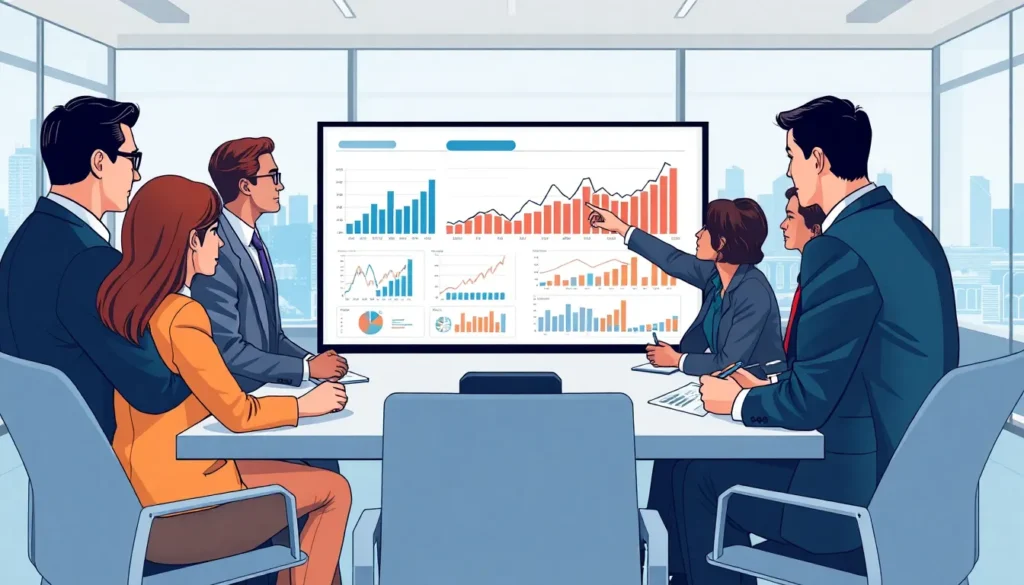In a world where money makes the world go ’round, understanding economic analysis and policy is like having a treasure map to hidden riches. Whether it’s deciphering the latest market trends or navigating government regulations, grasping the intricacies of economics can turn confusion into clarity. It’s not just for the number-crunching nerds in suits; it’s for anyone who wants to make sense of their finances and the economy at large.
Imagine being able to predict the next big economic shift while sipping your morning coffee. With the right insights, that dream can become a reality. By diving into economic analysis and policy, readers can unlock the secrets behind fiscal decisions that affect their wallets and well-being. So buckle up; it’s time to explore the fascinating world where numbers meet real-life impact.
Economic Analysis and Policy
Economic analysis serves as a vital framework for assessing various economic conditions. It incorporates statistical methods and models to evaluate data, helping policymakers shape effective strategies. Analysts often focus on key indicators like GDP, unemployment rates, and inflation.
Policies emerge from these analyses, addressing issues such as taxation, government spending, and regulatory measures. Understanding economic policy can guide individuals in making informed financial decisions. Examples include adjustments in interest rates, which influence borrowing costs for consumers and businesses alike.
Economic analysis also identifies market trends and forecasts future conditions. Economists study consumption patterns and investment flows to provide actionable insights. For instance, a rise in consumer confidence could predict increased spending, prompting targeted policy changes.
Both economic analysis and policy aim to stabilize and grow an economy. When fiscal decisions align with evidence-based analysis, they can yield positive outcomes. Additionally, engaging with these concepts enhances economic literacy among the general public, expanding access to critical information.
Policymakers rely on rigorous data analysis to navigate complex economic landscapes. Balancing competing interests often requires comprehensive studies to understand potential impacts on various demographics. Advocacy for transparency in economic policy can deepen trust and foster public engagement.
Key Components of Economic Analysis

Economic analysis encompasses various elements that provide insight into economic conditions. Microeconomic and macroeconomic analyses stand out as two critical components.
Microeconomic Analysis
Microeconomic analysis focuses on individual and business decisions regarding resource allocation. It examines how consumers react to changes in prices and income levels. This analysis delves into supply and demand dynamics, influencing market prices. Additionally, it provides insights into market structures, including perfect competition and monopoly situations. Policymakers rely on microeconomic indicators, such as individual consumer spending trends or firm production costs, to shape effective local strategies. Studying these patterns enables better forecasting of economic behavior at the individual and company levels.
Macroeconomic Analysis
Macroeconomic analysis considers the overall economy rather than individual markets. It evaluates national income, inflation rates, and unemployment figures. This approach assesses how fiscal policies affect economic growth. By analyzing aggregate indicators, such as Gross Domestic Product (GDP) and inflation rates, it identifies trends that impact economic stability. Policymakers leverage macroeconomic data to formulate policies aimed at stimulating growth or controlling inflation. Understanding these broader factors is essential for assessing a nation’s economic health and formulating strategic responses to economic challenges.
The Role of Economic Policy
Economic policy plays a crucial role in shaping a country’s economic environment. Effective policies influence fiscal stability and growth, directly impacting individual and business decisions.
Fiscal Policy
Fiscal policy involves government spending and taxation strategies to manage economic performance. By adjusting spending levels and tax rates, policymakers aim to influence economic activity. For example, increasing public investment can stimulate economic growth during a recession. Conversely, cutting taxes allows households more disposable income, encouraging consumer spending. Moreover, strong fiscal policies help balance budgets while addressing inflationary pressures. Policymakers rely on key indicators, such as GDP growth and unemployment rates, to make informed decisions that measure the economy’s health.
Monetary Policy
Monetary policy focuses on managing a nation’s money supply and interest rates to maintain economic stability. Central banks, such as the Federal Reserve, implement this policy to curb inflation and foster employment. Raising interest rates can slow down borrowing and spending, helping to reduce inflation. Lowering rates, on the other hand, promotes lending and investments, encouraging economic growth. Tools like open market operations and reserve requirements enable central banks to control monetary conditions and stabilize the economy. Evidence shows that effective monetary policy contributes significantly to a nation’s financial stability.
Tools for Economic Analysis
Economic analysis employs various tools to assess data and inform policy decisions. Key tools include statistical methods and econometric models, which provide essential insights into economic conditions.
Statistical Methods
Statistical methods analyze data trends and relationships, offering clarity in economic assessments. Techniques such as regression analysis and descriptive statistics help economists interpret vast amounts of information. For instance, regression analysis identifies connections between variables like income levels and consumer spending. Descriptive statistics summarize key indicators, like average income or inflation rates, serving as benchmarks for policymakers. These methods enable accurate reporting on economic conditions and foster informed decision-making.
Econometric Models
Econometric models serve as vital tools for predicting economic outcomes. These models combine economic theory with statistical techniques, enabling analysts to simulate various scenarios. By utilizing historical data, they assess the impact of fiscal policies on growth. Analysts might use models to examine potential effects of tax changes on GDP or employment rates. Improved forecasts result from these analyses, guiding effective policy formulation. Ultimately, econometric models help ensure that economic decisions rely on robust data interpretations.
Challenges in Economic Analysis and Policy
Economic analysis faces several challenges that can impact policy effectiveness. Data limitations often restrict the reliability of economic forecasts, leading to misguided decisions. Analysts may struggle with incomplete datasets that fail to capture essential economic activities or behaviors.
Complexity in economic systems adds another layer of difficulty. A wide array of variables interacts within an economy, making it tough to isolate specific factors influencing outcomes. This intertwining nature can obscure the cause-and-effect relationships that policies aim to address.
Political influences also present significant challenges. Policymakers might prioritize short-term gains over long-term stability due to electoral pressures. Such shifts can undermine the objectives of sound economic strategies designed for enduring progress.
Public misunderstanding of economic concepts can further complicate analysis and policy development. Misinterpretations of data can lead to misplaced public confidence or fear, affecting everything from consumer spending to investment. Engaging the public with clear and accurate communication is essential for building trust.
The evolving global economy introduces additional uncertainties. Economic policies must adapt dynamically to changing international trade relationships and financial conditions. Countries face new challenges, such as global supply chain disruptions, which can affect local economies.
Finally, ethical considerations in policy implementation cannot be overlooked. Policies need to balance efficiency with equity to ensure fair outcomes for all segments of society. The complexity of these considerations often complicates the decision-making process, highlighting the intricate relationship between economic analysis and effective policy formulation.
Conclusion
Understanding economic analysis and policy is crucial for navigating today’s complex financial landscape. By engaging with these concepts individuals can make more informed decisions that impact their personal and professional lives.
The tools and frameworks discussed not only clarify economic conditions but also empower individuals to anticipate market trends. As the economy evolves continuous learning and adaptation become essential.
Moreover the challenges highlighted remind us of the need for transparency and ethical considerations in policy-making. By fostering greater economic literacy and encouraging public engagement the path to a more stable and prosperous economy can be paved for everyone.



